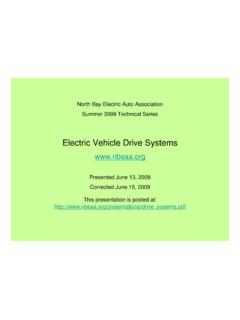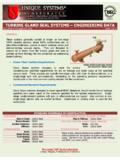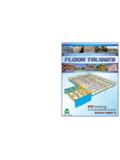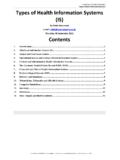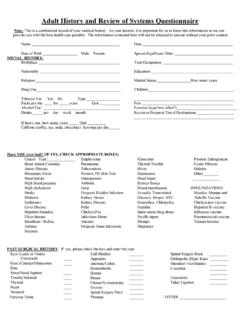Transcription of by Larry Workman 2011 - Expert4PVC Consulting
1 By Larry Workman 2011 . Published by the Plastic Pipe and Fitting Association 800 Roosevelt Road Building C, Suite 312. Glen Ellyn, Illinois 60137. PVC Piping Systems Helpful Tips for Avoiding Problems Preface The information in this book is the culmination and cooperation of manufacturer representatives who unselfishly work to improve their products for greater user experience with PVC piping. As the author, I was able to combine information the PVC pipe and fitting industry has assembled, gained and developed over the past decades. Many of the topics included have been shared, sometimes preached, by those who have preceded this document.
2 Some topics may be new enough that this may be first time you have read about them. I wish to express my thanks to the Plastic Pipe and Fittings Association, Terry McPherson, Jack Roach, IPS. Corp., and LASCO Fittings for their assistance and indulgence during the development of this book. Larry Workman Trabuco Canyon, CA. 2. PPFA 2011 All Rights Reserved Table of Contents Preface ..2. Failures ..4. Short Term (Burst) Failure ..5. Air ..5. Long Term Failure ..6. Surge (Water Hammer) ..6. Cyclic Fatigue ..8. Freeze ..8. Mechanical ..9. Split Female Threaded parts ..10. Solvent Welding Prevention and Cures.
3 13. Cyclic Failures ..13. Controlling Cyclic Surges ..16. Freeze ..17. Entrapped Air ..17. Bending and Mechanical Loads ..18. Threads ..19. External Threads ..20. Internal Threads ..21. Solvent Welding ..24. Exposure to Sunlight & Ultraviolet Thrust Blocking ..28. System Transition Fittings and Adapters ..32. Reference ..35. Index ..36. 3. PPFA 2011 All Rights Reserved Failures When things go wrong it is important to fix the failure, but it is even more important to find the cause. The cause most times is not simply a defective part, but more often the effect of another problem. Good design practice is to incorporate piping and fittings with a reasonable service factor for system reliability.
4 As an example, pipe with a pressure rating of 200 psi, should not be used in a system with a 175 psi working pressure. System pressure needs to include both static and expected surge pressure. When systems have repeated failures it may take some extensive investigative analysis of the entire installation to find the cause. Many times the closeness of the failures to each other could show the existence of pressure surges, or water hammer. It could be the consequence of the system installation, revision or repair at a different time than the rest of the site. In above ground piping, exposure to the ambient conditions could encroach on the life or service factor of the system.
5 The recent changes to a system, such as expansion or revision, have many times had a direct connection with system failures. Experience has shown that the increased flow rates, entrapped air from system restart have been the culprit in more than a few installations. These failures like those mentioned above tend to be clustered, but not necessarily in the new part of the system. Often the older piping suffers the damage because of these revisions. A comprehensive check of the system operational modes, including cycle time, pressure surge frequency and amplitude can provide valuable information in finding the cause of piping failures.
6 The use of most pressure recorders although helpful, cannot provide precise data on the damaging effects of pressure surges, air slugs or water hammer. In these cases the unusually high pressure spike the system experiences is of such short duration, milliseconds, that the recording mechanism cannot react quickly enough to record its peak. The pressure peak travels through a PVC system at roughly 1400 ft/sec. so the recorder only sees it for milliseconds. Before and after the pressure spike, the system pressure would be close to normal and only a small blip would have been recorded, with the amplitude many times removed from the true value.
7 A simple but often overlooked piece of evidence in tracking the source of a failure is to go over all the failed components to look for similarities. On more than one occasion a manufacturer has been accused of a defective product only to have a group of components of differing brands or configurations on the same system failing. The common denominator would likely be the system and not the manufacturer. Any failure that is the result of external stress or loads will reoccur if the stress is not removed. If you need to install extra supports or restraints to remove the external stress, make sure you do it before making repairs.
8 With external failures, a crack or break will progress from the outside of the pipe or fitting toward the interior. 4. PPFA 2011 All Rights Reserved A simple method can help you decide if a failure is external. Try to open the crack or make it wider. This will show where the external loads were applied. It is also important to know that cracks and splits are perpendicular to the producing load. For example when paper is torn, pulling horizontally causes it to tear vertically. Each has a set of characteristics that can be used to help find the source of the problem. Causes of failures in PVC systems: Short Term (Burst).
9 Hydrostatic (Liquids). Pneumatic (Air/Gas). Long Term Failure Surge (Water Hammer). Air Slugs/Entrapped Air Cyclic (Fatigue). Freeze Mechanical Bending Flange Installation Over tightened threads Solvent Welding Short Term (Burst) Failure The failure of a pipe or fitting from exceedingly high pressure over a short period, usually defined as less than a minute, would be classified as a burst or short term failure. The more common evidence for these failures is sharp edged cracks and fragments, similar to glass. If these fragments are not contained or entrapped during the failure they can be dangerous. This is the foremost reason that PVC piping and fittings are NOT to be used to transport or to be tested with compressed air.
10 I Figure 1: Typical burst or short term failure A short term or brittle failure shows no visible, to the naked eye, material deformation, stretching, elongation or necking down close to the Air Except under very special circumstances, PVC piping is not to be tested or used with compressed air or The catastrophic failure of a PVC air assembly, with its sharp shrapnel pieces is dangerous, and can be deadly. Water and most liquids are not compressible, but air and gases 5. PPFA 2011 All Rights Reserved are. The potential energy stored in a compressed air piping system at about 100-psi has propelled sharp edged fragments hundreds of feet in all directions.


